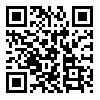
year 11, Issue 1 (Journal of Acoustical Engineering Society of Iran 2023)
مجله انجمن علوم صوتی ایران (مهندسی صوتیات سابق) 2023, 11(1): 59-65 |
Back to browse issues page
Download citation:
BibTeX | RIS | EndNote | Medlars | ProCite | Reference Manager | RefWorks
Send citation to:



BibTeX | RIS | EndNote | Medlars | ProCite | Reference Manager | RefWorks
Send citation to:
Lakzayi H, Pouransari Z. Assessment of the beamforming method for numerical investigation of the noise source locations in a turbulent channel flow (Research Article). مجله انجمن علوم صوتی ایران (مهندسی صوتیات سابق) 2023; 11 (1) :59-65
URL: http://joasi.ir/article-1-270-en.html
URL: http://joasi.ir/article-1-270-en.html
Abstract: (1275 Views)
In this study, a turbulent flow inside a closed channel is considered. For many years, aeroacoustic researchers have used integral formulations and acoustic analogies like the Ffowcs Wiliams and Hawking's equations to find the location and power of sound sources in turbulent flows and their propagation to far fields. Recently, researchers are interested in coupling traditional acoustic analogies with numerical beam-forming methods; In the far field and outside of sound computation region, acoustic pressure is calculated on a specific array of virtual microphones and then beam-formed is transformed into hypothetical source points in the stream to obtain a source distribution map in the desired area. But in this work, a microphone array is located inside the sound source and the noise propagation domain (here, the DNS method is also used to directly calculate the sound emission range. By using this method, bias errors are reduced). This work is focused on the localization and locating of sources using the beam-forming method. Finally, acoustic maps are drawn. These maps are drawn in three different frequencies where the frequency value is equal to f=2, 5 and 8.
Keywords: Aeroacoustics, Turbulent flow, Beam forming method, Ffowcs Williams-Hawkings equations (FW-H), Localization of noise sources.
Type of Study: Research |
Subject:
Atmospheric Acoustics
Received: 2023/07/3 | Accepted: 2023/09/20 | Published: 2023/09/1
Received: 2023/07/3 | Accepted: 2023/09/20 | Published: 2023/09/1
Send email to the article author
| Rights and permissions | |
 |
This work is licensed under a Creative Commons Attribution-NonCommercial 4.0 International License. |


